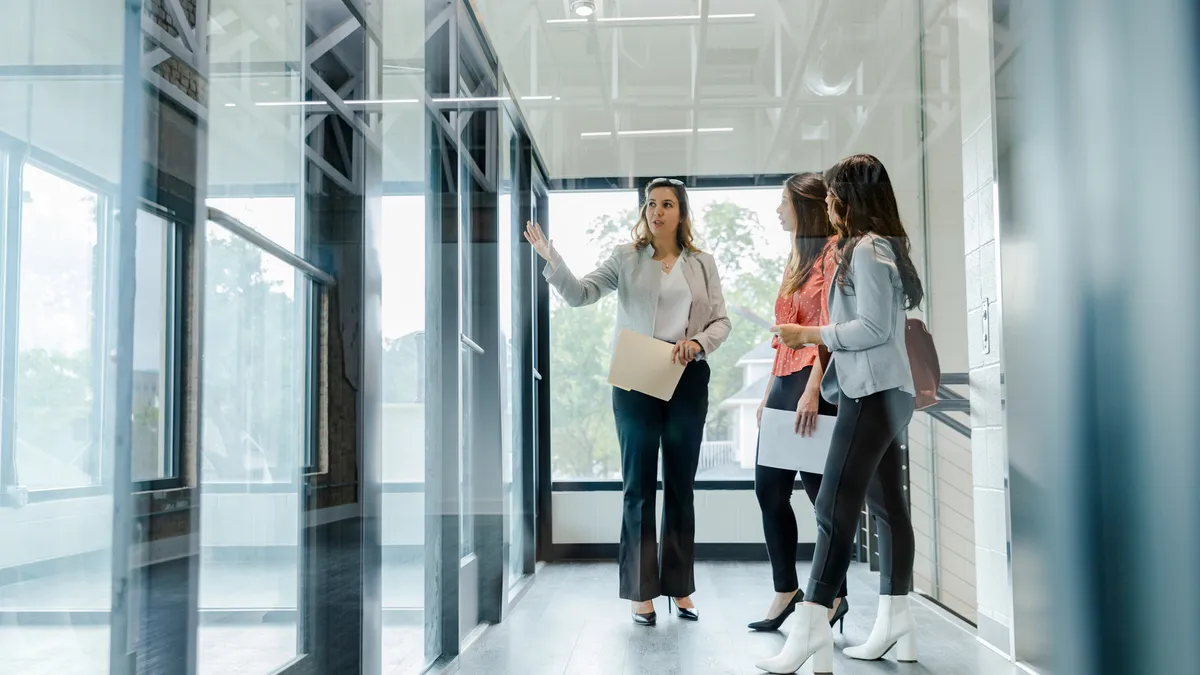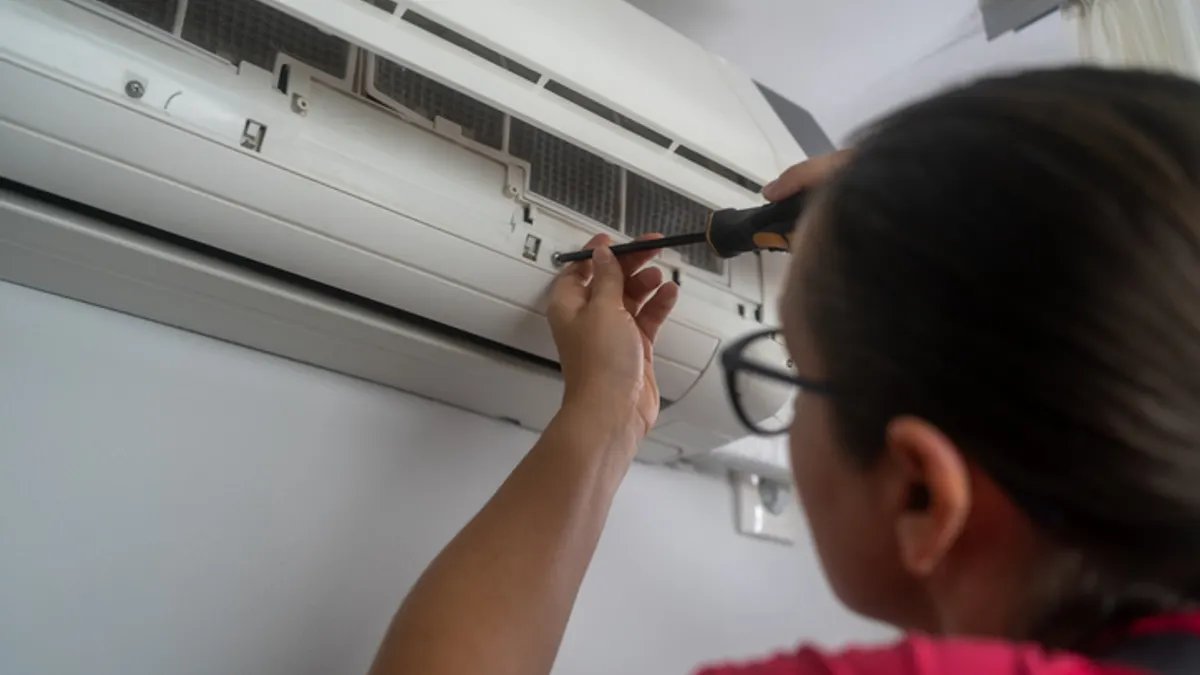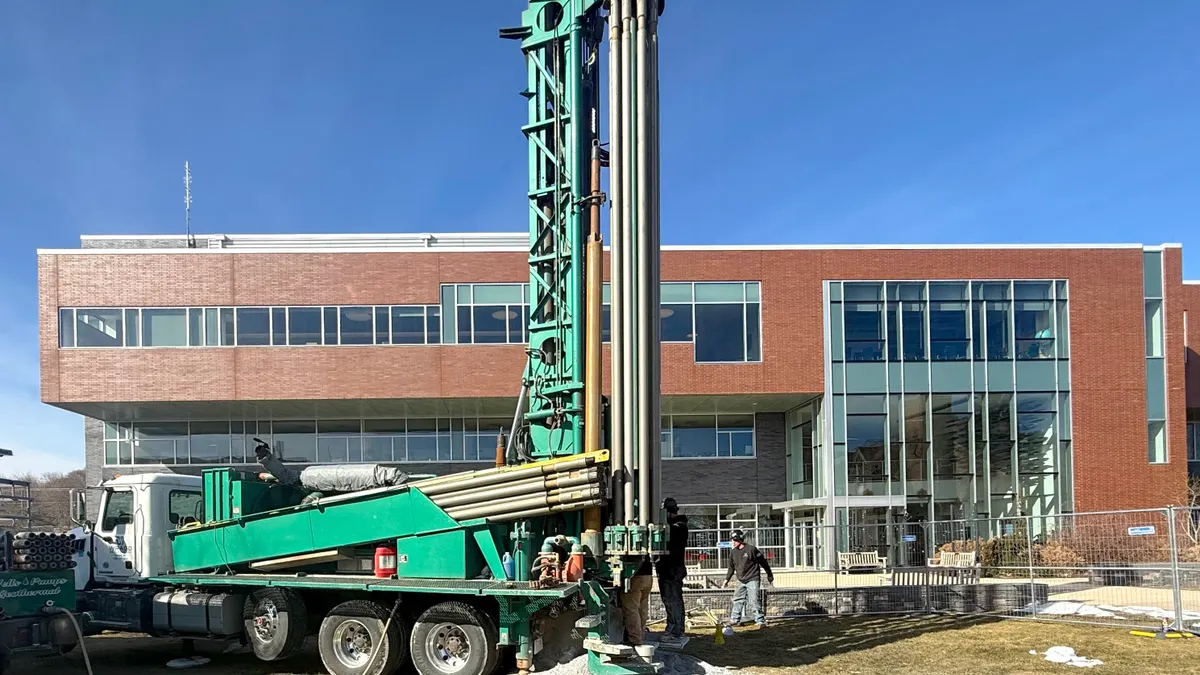U.S. office vacancies showed their first year-over-year decline since the pandemic, according to a report by CBRE. The shift has been driven by a slowdown in new construction and the demolition and conversion of older office space, according to Stefan Weiss, U.S. head of office research for CBRE.
The vacancy rate of 18.8% in Q3 compares to 19% a year prior — a high that previously hadn’t been touched since 1992 in the wake of the savings and loan crisis, Weiss told CFO Dive. The current healthier vacancy rate, which is one of the latest signs that the office sector has begun to shrug off the effects of remote and hybrid work that have impacted commercial real estate since the pandemic began, Weiss said.
Leasing activity rose 15% quarter over quarter and 11% year over year to 59.8 million square feet. Although the number of lease transactions to date increased 26% from the 2018 and 2019 pre-pandemic average, the total square footage fell 4% and the average lease size dropped 24%, partly due to hybrid work, CBRE’s report says.
Small occupiers are driving most demand, with leases between 10,000 and 20,000 square feet comprising 56% of year-to-date activity. Renewals remained above the pre-pandemic average, with higher-than-average renewals possibly continuing due to higher moving and construction costs, according to CBRE.
The closely watched national VTS office demand index, which monitors demand compared with pre-pandemic averages, finished the third quarter at 72, marking a 16% year over year increase. VTS says the market is caught between two recent powerful and opposing macroeconomic forces, including the federal government shutdown and the U.S. Federal Reserve’s 25-basis-point interest rate cut.
While the government shutdown immediately halts new federal leasing and imposes an “uncertainty tax” on the private sector, discouraging long-term commitments, the rate cut could act as a potential tailwind to help reduce borrowing costs, VTS says. As these two forces collide, markets continue to bifurcate between those with a high concentration of remote-heavy industries and those reliant on traditional, office-centric sectors, the firm says. Remote-heavy markets are largely dominated by high-growth industries like technology and life sciences, VTS says.
Demand for “remote-heavy markets,” including Washington, D.C., Boston, San Francisco and Seattle surged 47% quarter-over-quarter; “non-remote-heavy markets,” i.e. New York, Los Angeles and Chicago, were meaningfully down 26%, VTS says.
Much of the return-to-office trend is not being driven by mandates, but by perceived improvements in productivity, innovation and growth metrics that arise from having employees at the physical workplace, according to Colleen Werner, CEO of Playbook, a firm that operates and advises on 50 million square feet of space across 18 U.S. markets for owners such as Hines, PGIM and CBRE.
“We’re in the second wave of this,” Werner said. “We’ve now surpassed just the tenant company themselves recognizing it and actually gotten to the individual user. We’re really starting to see behavior that indicates that users are recognizing the benefit that the physical space can provide to them.”
As a result, prime buildings have continued to outperform in most markets as the spread between prime and non-prime office vacancy rates widening 4.9 percentage points in the third quarter.
Some markets, including Charlotte, San Francisco, Dallas-Ft. Worth, Philadelphia, Phoenix and Chicago showed prime vacancy rates more than 10 percentage points below each market’s overall vacancy rates. Others, like Nashville, Raleigh-Durham and Seattle, temporarily increased their prime vacancy rates due to substantial amounts of office completions, the report says.
“Users of prime space are seeing the market is tighter but it’s still a tenant-favorable market for anything outside of that prime product,” Weiss told CFO Dive. Average U.S. office taking rents which do not include concessions rose 1.7% year over year to $32.47 per square foot in Q3. Despite this, asking rents on an inflation-adjusted basis are the lowest they’ve been since about 1988, Weiss said.













